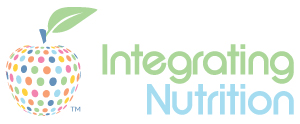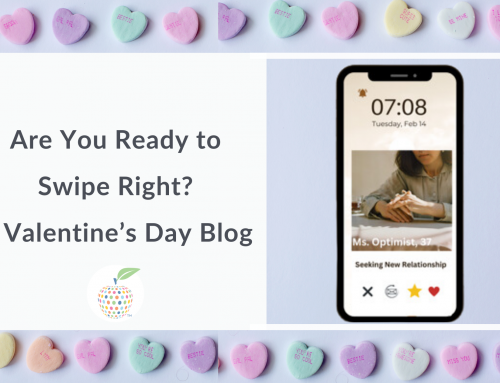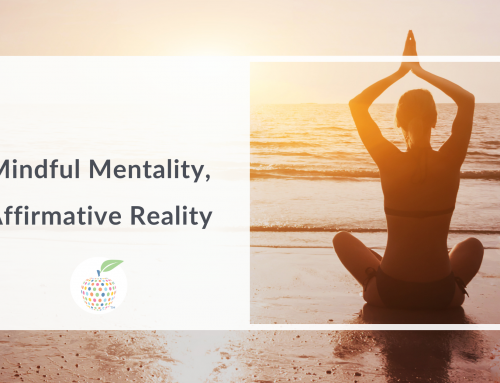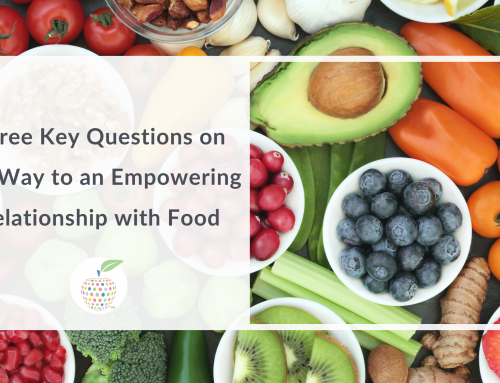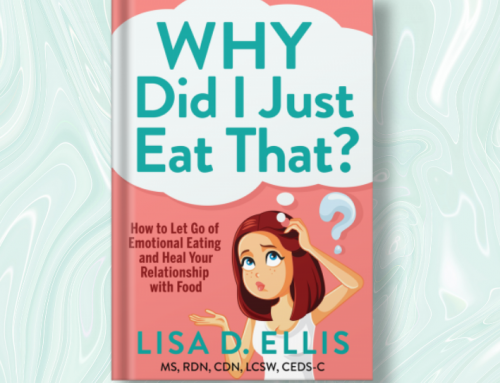Black and White Eating has nothing to do with comparing the foods eaten by the color of one’s skin, nor does it have anything to do with those huge half chocolate/half-vanilla iced cookies often found at deli counters. And though the term “Black and White Eating” may not be that commonly known, most people with diet experience know the dynamic well. To understand that dynamic is to understand the root of many eating issues; the good news here is that that understanding may help a lot of people stuck on the diet treadmill create new, healthier relationships with eating, food… and their own self-perception.
It probably will not come as a great shock to anyone if I were to point out that there is often a connection between eating issues and some level of anxiety. I’m not just referring to major, clinical bouts of anxiety; I also refer to those garden-variety nagging sensations that can plague us all from time to time. One of the ways we tend to manage our anxieties is through trying to get a handle on our world by controlling as much of it as we can. One way the impulse to control shows up is through perfectionism. And perfectionism is a major trigger of Black and White Eating issues. Because perfectionism and Black and White Eating thinking both often have an “all or nothing” aspect at the root.
The all-or-nothing aspect views eating choices in strictly opposing terms. You either do your diet with complete, 100% perfection, or you just bail on it totally. One of my clients, a mom and middle-school school teacher named Sally (not her real name, of course) is a prime example of this dynamic. She had been struggling with diets since she had her last child four years before she came to my office. At our first session, she shared a event that had happened the weekend before, which gave me an insight to her Black and White approach to eating:
“I went out for Sunday brunch with my family, something I had been dreading all week. And they all wanted and then ordered croissants. I wanted a croissant too, but I’m not allowed to have that on my diet, so I ordered an egg white omelet with tomato slices. I ate my food with my mouth, but theirs with my eyes. Afterwards, I went home and I felt so deprived that I began to eat a cookie….whiich turned into 3, then 8…. That’s when the “fuckits” came in…I already “ruined my diet” so I decided I might as well eat everything I can find. So I ate the whole box, and some leftover pasta, and…”
And so began a large binge. Sally ended a perfectly good day feeling defeated once again.
This commitment to “restrict all or restrict nothing” may seem like it starts with good intentions, but the thinking is faulty. Unless there is some sort of worrisome food allergy present, what is the actual harm of having, say half a croissant with fruit–or a even whole one–if the alternative is what amounts to a debilitating feeling of deprivation, followed by a binge?
People who struggle with black and white eating see restriction as totally good, and the inevitable surrender to eating when you can’t sustain perfection as totally horrible. They are, on some level, afraid of food. So, obviously, the first step in healing a relationship with food is to stop being afraid of it.
One way to stop being afraid of this is to move our relationship with food from our rule-based mind to our intuitive heart. I’m a firm believer in Intuitive Eating, which is following your hunger and fullness cues. With Intuitive Eating, we don’t see restricting food as a good thing in-and-of-itself. And most importantly, an Intuitive Eater enjoys eating and respects food as a good thing… without guilt or misgivings.
And my final tip to taking the power out of black and white thinking–whether the subject is food, or any other aspect of our lives where crippling perfectionism rears its ugly head–is to remember that in most cases, good enough is good enough.
So why don’t we give ourselves a break, embrace the “good enough,” and trust our intuition… maybe finding our way around Sunday brunches just got a little bit easier.
